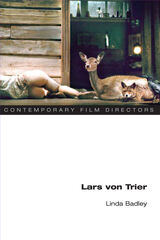Nickelodeons and Black Vaudeville: The Forgotten Story of Amanda Thorp
University of Tennessee Press, 2023
Cloth: 978-1-62190-802-9 | eISBN: 978-1-62190-803-6
Library of Congress Classification PN1998.3.T486
Dewey Decimal Classification 384.8092
Cloth: 978-1-62190-802-9 | eISBN: 978-1-62190-803-6
Library of Congress Classification PN1998.3.T486
Dewey Decimal Classification 384.8092
ABOUT THIS BOOK | AUTHOR BIOGRAPHY | TOC | REQUEST ACCESSIBLE FILE
ABOUT THIS BOOK
In an era of online streaming, it may be difficult to recognize the importance of a woman who in 1908 established the first silent movie theater in Richmond, Virginia: the Dixie nickelodeon. But Amanda Thorp, an independent, self-made woman, was on the ground floor of a popular culture that would grow to be enormously influential in our modern era. In Nickelodeons and Black Vaudeville: The Forgotten Story of Amanda Thorp, Kathi Clark Wong’s extensive archival research uncovers Thorp’s impressive contributions not only to moviegoing and its growth in America, but also perhaps even more surprisingly, Thorp’s support of early Black vaudeville in the Jim Crow South.
Movie theater entrepreneurs like Thorp, who got her start at her Wonderland Theater in Bucyrus, Ohio, helped create our culture’s insatiable appetite for film. But it was after she established the Dixie in Richmond, that Thorp—a White woman—also saw a market for providing Black-centric entertainment. She converted the Dixie to all-Black patronage and began to bring in scores of Black vaudeville acts. Later, she built the Hippodrome Theater, in the heart of Richmond’s now-historic Jackson Ward, expressly for Black entertainment. Though she eventually left the field of Black entertainment behind, Thorp developed other movie venues in Richmond that brought in tens of thousands of (White) moviegoers over the years and which were widely admired for their elaborate trappings.
Thanks to Wong’s research, contemporary readers can now benefit from the story of Amanda Thorp, a woman who amidst severe gender role constraints not only claimed social capacity on the crest of a rapidly growing industry but also, almost inadvertently, contributed to the success of early Black vaudeville, a subject which thus far has not received the scholarly attention it deserves.
Movie theater entrepreneurs like Thorp, who got her start at her Wonderland Theater in Bucyrus, Ohio, helped create our culture’s insatiable appetite for film. But it was after she established the Dixie in Richmond, that Thorp—a White woman—also saw a market for providing Black-centric entertainment. She converted the Dixie to all-Black patronage and began to bring in scores of Black vaudeville acts. Later, she built the Hippodrome Theater, in the heart of Richmond’s now-historic Jackson Ward, expressly for Black entertainment. Though she eventually left the field of Black entertainment behind, Thorp developed other movie venues in Richmond that brought in tens of thousands of (White) moviegoers over the years and which were widely admired for their elaborate trappings.
Thanks to Wong’s research, contemporary readers can now benefit from the story of Amanda Thorp, a woman who amidst severe gender role constraints not only claimed social capacity on the crest of a rapidly growing industry but also, almost inadvertently, contributed to the success of early Black vaudeville, a subject which thus far has not received the scholarly attention it deserves.
See other books on: African American theater | Business | Businesswomen | Motion picture industry | Vaudeville
See other titles from University of Tennessee Press






























